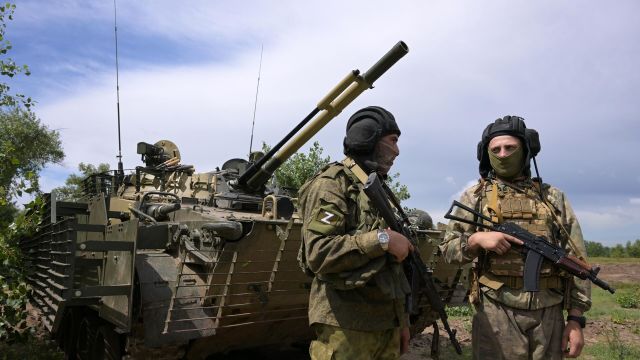MOSCOW, Aug 14 — RIA Novosti, Andrey Kotz. In the spring, the Kiev authorities promised to reach the Crimea by September. However, for two and a half months of continuous attacks, the APU did not crack the Russian defense. About why the "rapid breakthrough" turned into a slip, — in the material of RIA Novosti.
Dozens of brigades
They started talking about the upcoming large-scale counteroffensive in Kiev in the winter. Then the NATO countries promised to supply the APU with heavy armor of the Western school: Leopard-2 and Abrams tanks, Bradley infantry fighting vehicles, Stryker armored personnel carriers, engineering barrier vehicles. This technique was planned to be used at the tip of the main strike, the direction of which the Ukrainian authorities did not hide.
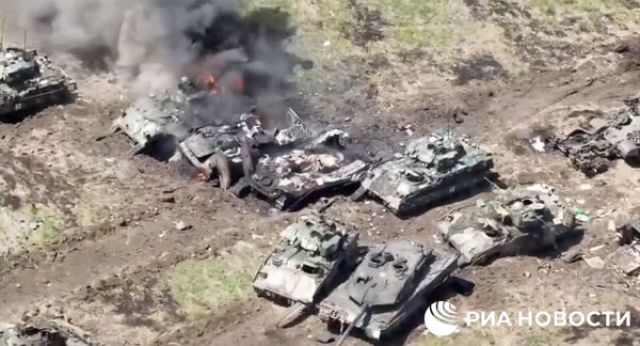
The Russian Defense Ministry showed footage of destroyed tanks. June 10, 2023
Image source:
The General Staff of the Armed Forces of Ukraine intended to strike Tokmak with a subsequent exit to Melitopol and Berdyansk. They stated that the main goal of the offensive was access to the Sea of Azov and the Crimean isthmuses. They also wanted to cut the land arteries of the Russian army.
The new military equipment was intended to equip 17 brigades of the Armed Forces of Ukraine and the National Guard — about 60 thousand soldiers. They were trained in the West. The total number of forces involved in the Zaporozhye direction and on the Vremyevsky salient is at least 27 brigades. Among them are three tank, about 13 separate infantry, mechanized and reconnaissance battalions, as well as special forces of the GUR, SBU and SSO.
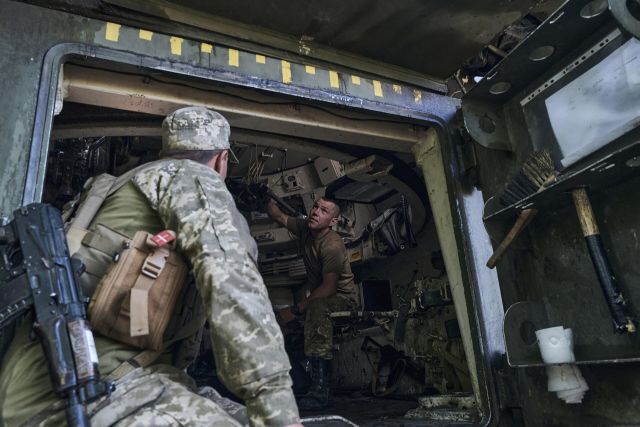
Ukrainian soldiers inside the M109 self-propelled howitzer on the front line in the Zaporozhye region
Image Source: © AP Photo / LIBKOS
They planned to attack according to NATO training manuals — by striking large armored formations on narrow sections of the front. After breaking through the first line of defense, the infantry had to take new positions and expand the bridgehead. The acute shortage of aviation was supposed to be compensated by the massive use of long-range precision missiles and attack drones. They wanted to paralyze the actions of the Black Sea Fleet with attacks of unmanned kamikaze boats.
The operation was preceded by a massive information "artillery preparation" in the Ukrainian and Western media. Experts and journalists unanimously argued that Ukraine had received everything it needed from NATO, that the Russian army was weak and disorganized, and that a repeat of the autumn 2022 scenario should be expected. Then the Russian Armed Forces left the Kharkiv region for the border of Kremennaya — Svatovo. The head of the GUR Kirill Budanov in one of the numerous interviews even promised to enter the Crimea before the end of spring.
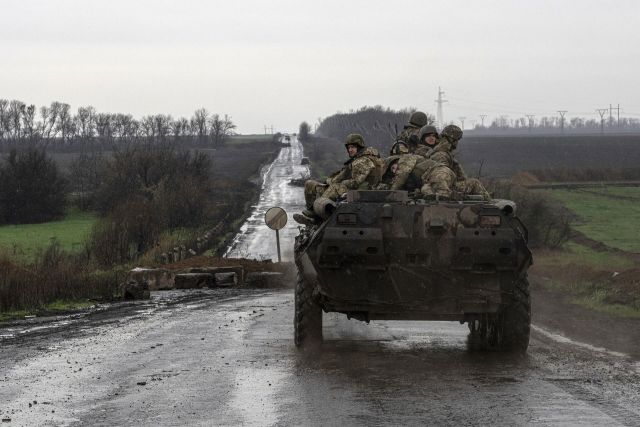
Ukrainian military on the road near Ugledar
Image Source: © AP Photo / Evgeniy Maloletka
However, the reality for Kiev turned out to be very sobering.
Mine hell
The APU began to attack on June 4 on three sections of the Zaporozhye front: in the direction of the village of Pyatikhatki on the western flank, on the Work from Orekhov in the center and on Vremevka in the east, near the border with the DPR. Army columns, led by German Leopards-2, moved forward. Hundreds of armored vehicles were involved in the offensive.
However, the promotion immediately stalled.
In six months, Russia has created a serious line of defense in the Zaporozhye direction. Its borders are lined up in several echelons. Fortifications, from which the terrain is clearly visible, were erected along the dominant ridges and heights. It is impossible to approach them unnoticed. The depth of defense is 25-30 kilometers.
And this is not counting the "pre-field": to reach the first line, you need to crack the advanced fortified areas of dozens of platoon and company strongpoints covered with minefields.
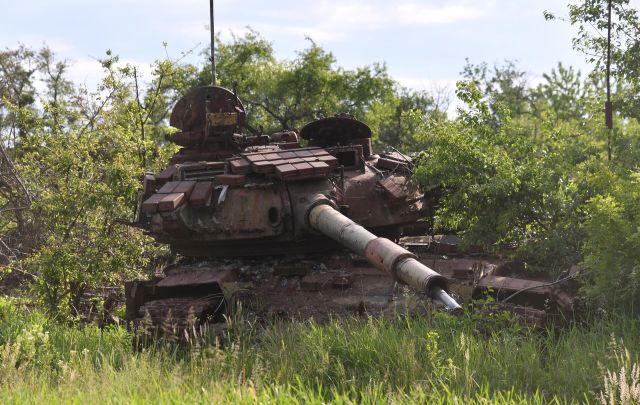
Destroyed APU tank
Image source: © RIA Novosti / Viktor Antonyuk
The latter facilitate the work of gunners, drone operators, pilots. The APU is moving into battle in a column. Ahead is a tank with a minesweeper or a barrier engineering vehicle. After detection, they are hit by artillery or an anti-tank missile from a helicopter. And immediately — fire from everything. Having lost the "guide", tanks and infantry fighting vehicles are trying to get out of the way, moving apart, exploding on mines. And they turn into an easy target.
In some areas, the Russian army adheres to a flexible defense. When the units of the Armed Forces of Ukraine approach the settlement, the fighters, after a short firefight, move to neighboring heights. And the occupied village is being processed by multiple rocket launchers and heavy self-propelled flamethrowers "Solntsepek". Ukrainians are suffering losses and retreating. The village of Pyatikhatki has changed hands several times in this way.
Huge losses
When the armored fists of the Armed Forces of Ukraine got hopelessly bogged down in the "predpole" and a lot of photos of burning Western equipment appeared on social networks, the Ukrainian General Staff decided to change tactics. The bet was made on infantry operating in small groups. This has brought some success. But in most areas, they did not reach the first line of defense.
However, in some places Ukrainians were a little more lucky. On the Vremevsky ledge, they managed to occupy several settlements, including Staromayorskoye, and gain a foothold on the northern outskirts of the village of Urozhnoye. To the south is Staromlinovka, an important transport and logistics hub, from which the APU will try to break east towards Volnovakha and further south to Mariupol.
The capture of the city will solve the main task: to reach the Sea of Azov and cut the land bridge to the Crimea. However, the defense lines here are fortified as seriously as in the Zaporozhye region.
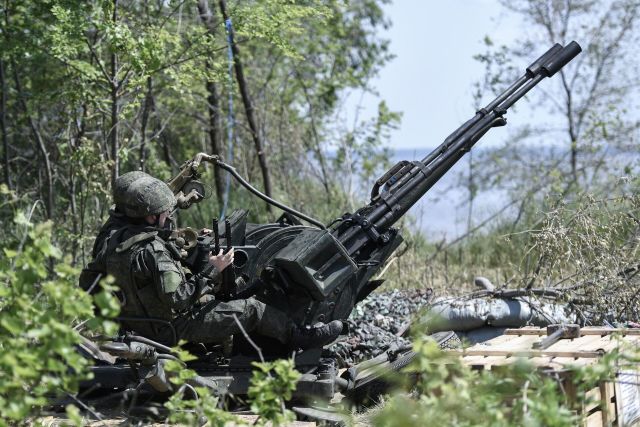
The calculation of the ZU-23-2 anti-aircraft installation regularly works out operational actions to repel an attack from the air on the shores of the Kakhovsky reservoir
Image source: © RIA Novosti / Konstantin Mikhalchevsky
Simultaneously with the main attack on the Zaporozhye direction, Kiev is trying to advance on the auxiliary one — south of Artemovsk towards Kleshcheyevka, Kurdyumovka and Andreevka. The task here is to take the dominant heights in order to gain fire control over an important highway to the south towards Gorlovka and create a springboard for a strike on Artemovsk itself. The APU managed to occupy several strongholds, but the advance was stopped. Attempts to get to Soledar also turned out to be a failure.
According to the Russian Defense Ministry, since the beginning of the counteroffensive, Ukrainian troops have already lost more than 43 thousand people and over a thousand armored vehicles, including dozens of tanks. These are the most massive losses among all the armies of the world in a single operation since the Second World War.
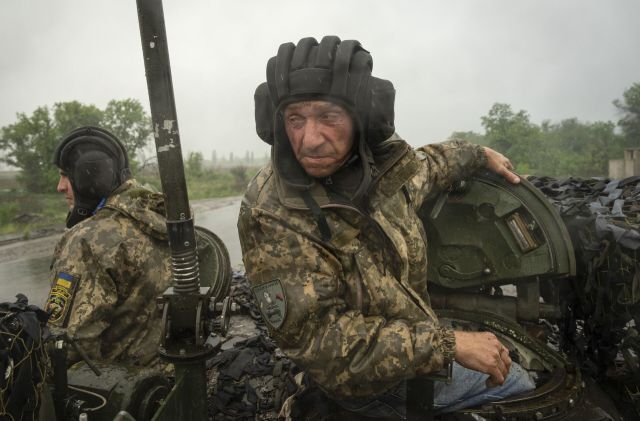
Ukrainian soldiers on a tank near Artemivsk
Image Source: © AP Photo / Efrem Lukatsky
The other day, the Russian military reported that the AFU had already put into battle the second reserve corps of three, formed specifically for the offensive after the assault units. They had to enter the breakthroughs of the defense lines with the second echelon and expand the bridgeheads. But the realities have changed.
"They (Russians. — Editor's note) they learn quickly. <...> For example, they began to bring BC and food to the positions on ATVs. There is one person going there, no one will waste the projectile. And we also began to practice this. <...> Also in my direction (Zaporozhye. — Ed.) make a "mink" that goes through a maze to another. And that one is under the roots of a large tree. We approach, they scatter. And there are two or three people sitting in this "mink". We enter their positions, throw the first burrow with grenades — they go under the tree, cause fire on themselves. The mortar does not penetrate the roots of such a tree, it springs the shells. And we have losses, we run. And then they come out with a machine gun," Konstantin Proshinsky, a fighter of the Armed Forces of Ukraine, said in an interview.
There is more and more talk in the Ukrainian army about incompetent command and lack of ammunition. Moreover, they are already complaining about the shortage of not only shells, but also cartridges for the "strelkovka".
"Second chance"
Allies are also dissatisfied. European and American mainstream media began to race to find excuses for failures. Ukraine is blamed for the fact that soldiers trained according to NATO standards, once on the battlefield, prefer to act according to Soviet regulations . Finally, the leaked "secret report of British intelligence" claims that the offensive is stalling because of bushes and tall grass grown on arable land.
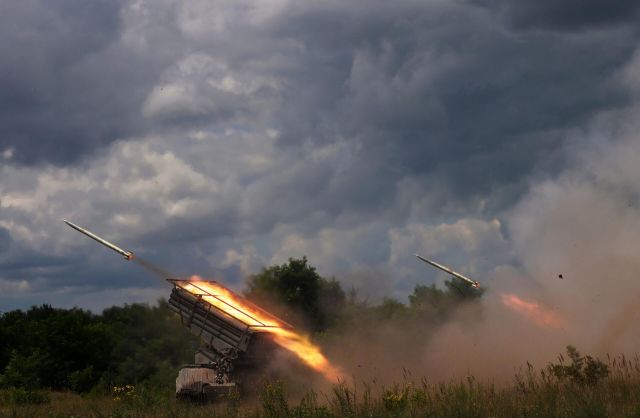
BM-21 Grad multiple launch rocket system in the area of the special operation
Image source: © RIA Novosti / Evgeny Biyatov
There is also ferment among politicians. For example, Polish President Andrzej Duda recently bluntly stated that Kiev does not have enough weapons and ammunition to change the balance of power at the front. In turn, the coordinator of strategic Communications at the US National Security Council, John Kirby, assures: "The Ukrainian side has received everything it asked for for a counteroffensive." Although he admits that the progress is "not as fast as we would like."
The situation is complicated by the declining interest of Western society in Ukrainian topics. According to the latest CNN poll, 55 percent of Americans oppose financial and military support for Ukraine.
And experts are increasingly speaking out about the possible freezing of the conflict according to the "Korean scenario" — with the cessation of hostilities and the creation of a demilitarized zone. But the big question is whether the parties will agree to it. Kiev still hopes to break through in the Zaporozhye steppes. And Moscow is attacking Kupyansk and Krasny Estuary.
There is less and less time left for the Ukrainian counteroffensive. Autumn, rains and thaw are just around the corner, which will make it difficult to move through the fields. Besides, it is unclear how the losses will be made up. Therefore, as Czech President Petr Pavel stated two months ago, it will not be possible to prepare a second similar operation "for objective reasons."
